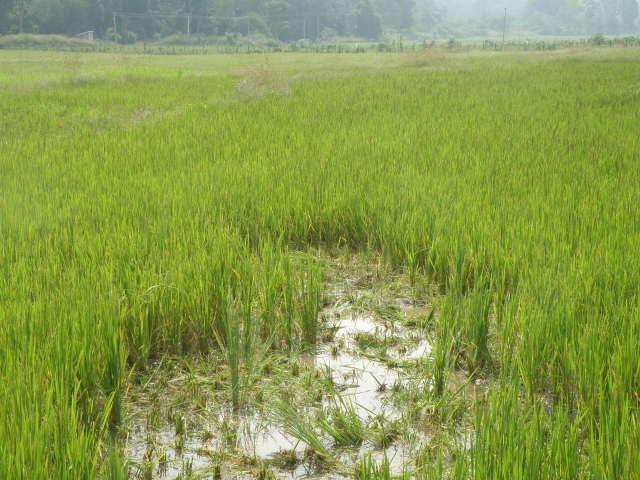Vani Dahiya
This study attempts to address elephant-human conflict (specifically crop raiding) in an extensive multivariate framework by looking at several ecological variables (viz. spatial correlates, foraging behaviour and factors related to elephant demography) to better understand crop raiding behaviour in elephants in Kodagu, southern India.

A paddy field damaged by an elephant.
Elephant-human conflict (EHC) is a pressing conservation concern arising due to overlaps in human and elephant needs for the same resources. It has dominated the past few decades as one of the most relevant global conservation issues. EHC is characterised by interactions between elephants and humans which result in negative effects on human social, economic or cultural life, on elephant conservation or on the environment. Conflict cases are on a rise, especially in areas previously unaffected.

Elephant dung sample collection to determine elephant diet.
Over the years, considerable research has been conducted on mitigation measures, people’s perspectives and management of EHC; however studies on the inherent biological dynamics of EHC are few and fragmented. We believe that in order to be able to deter crop raiding, it is critical to understand the underlying causes of such behaviour as well as the spatio-temporal variation in those causes. This study attempts to understand the ecological drivers of elephant crop-raiding behaviour in a multivariate framework that incorporates several factors i.e. spatial variables, foraging behaviour and elephant demography. Therefore, the proposed study aims to address questions related to the role of local and landscape level spatial variables in determining the frequency/intensity of crop raiding by elephants, differences between male elephants and female-led herds with respect to crop raiding and nutritional differences between raided crops and natural forage.
The field site for this study is located in Kodagu, the smallest district in Karnataka, southern India. It lies to the south-west of the state, between geographic coordinates 11°55"33.6' to 12°50"4.2' N and 75°22"1.2' to 76°12" E, covering a total area of 4102 sq. km. Kodagu records a high number of elephant-human conflict cases annually. Additionally, Kodagu offers an interesting landscape in terms of presence of both fragmented and continuous forested areas as well as presence of dry deciduous and wet evergreen forests, thereby enabling testing of several proposed predictions.
This study strives to make a contribution to both scientific knowledge as well as nature conservation. The unifocal treatment of elephant-human conflict in the past has inspired the need for the development of a unified approach adopted in this study. Conservation too stands to benefit from scientific input and the findings of this study would contribute to the development of appropriate EHC mitigation measures and better forest management practices. Such activities will have a direct bearing on the welfare of affected local communities and wildlife. The results of the study would also assist decision makers in formulation and implementation of scientifically sound policies.